'Once in a lifetime player' Jim Brown forged complicated relationship with Paul Brown
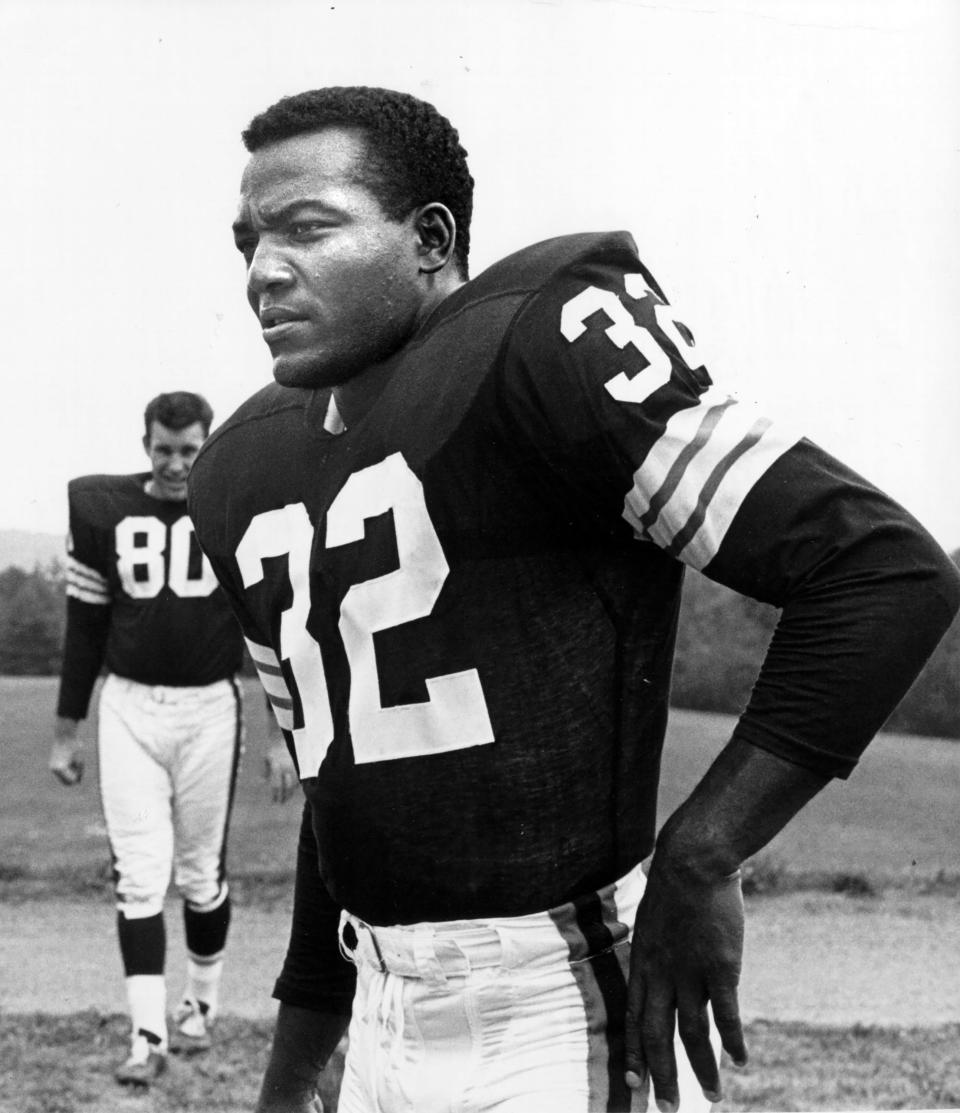
As the football world contemplates Jim Brown's death, his relationship with Coach Paul Brown lives on as the pivotal story behind an NFL franchise's complicated existence.
Jim Brown's rookie year arguably marked the final season of Paul Brown's Cleveland dynasty.
Yet, it was just the start for those two. The fabulous back spent two-thirds of his Browns run with the famous head coach. What could have been a fantastic union ended after six winning but largely unsatisfying seasons.
Under Paul Brown from 1946-55 — the first 10 years of the Browns' existence — the team reached league championship games all 10 seasons, all with Otto Graham at quarterback. Belichick-Brady is a latter-day Brown-Graham.
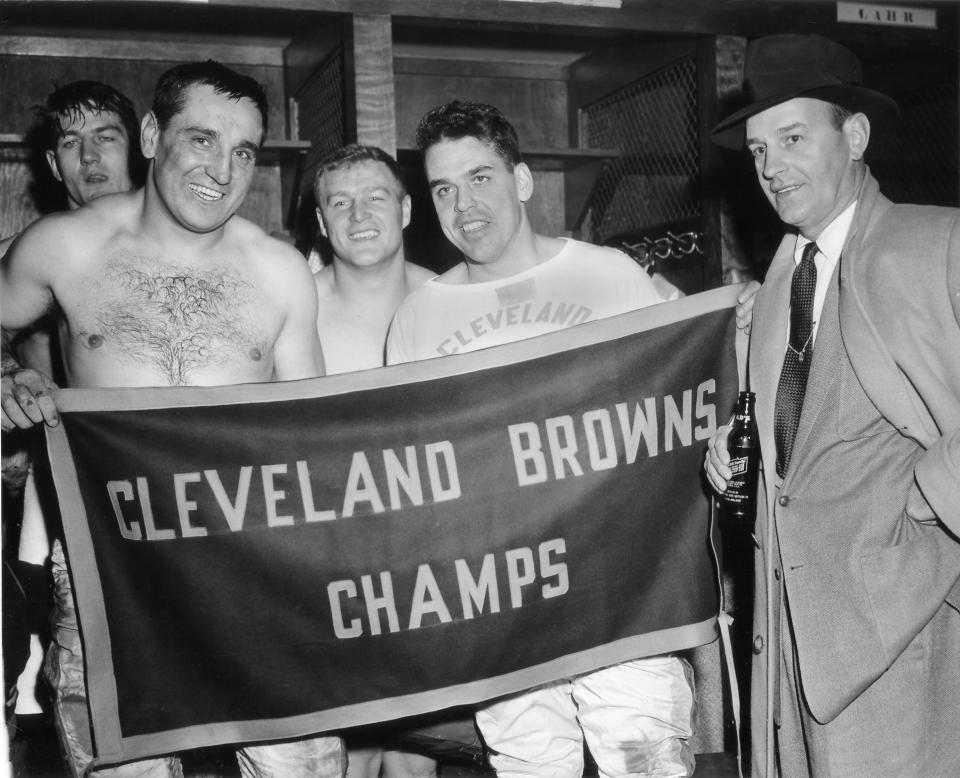
Graham retired after the Browns won the 1955 NFL championship, and the team slumped to 5-7 in 1956. Help was on the way.
Jim Brown arrived in 1957 as a No. 6 overall draft pick. That seems strikingly low for someone mentioned in "best player in NFL history" debates, but at the time, he was coming off a college football experience he didn't love. Drafts in that era reflected the fact league rosters were predominately white. And Brown played running back, not quarterback.
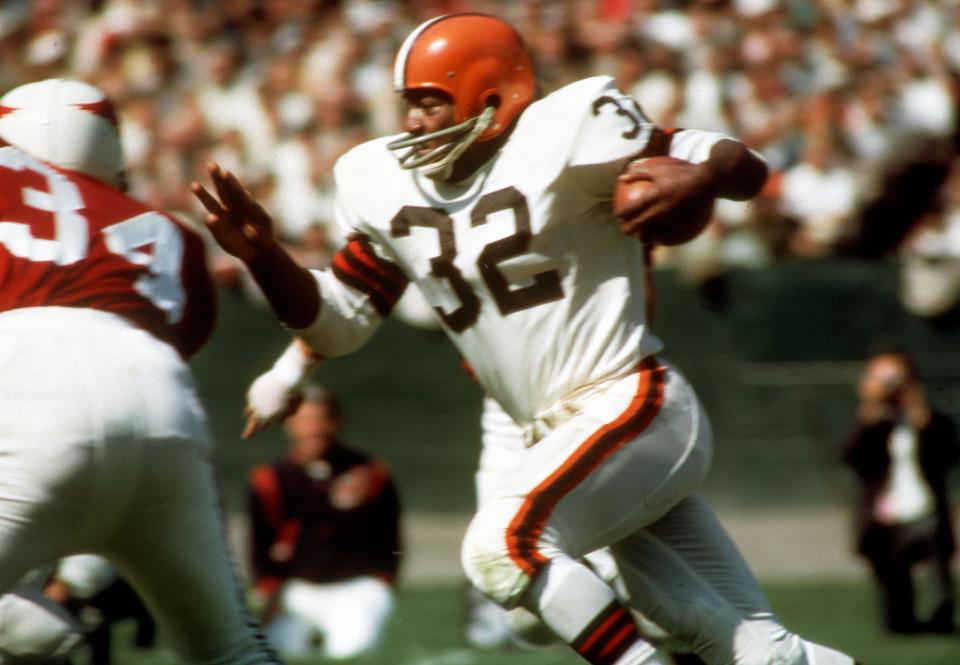
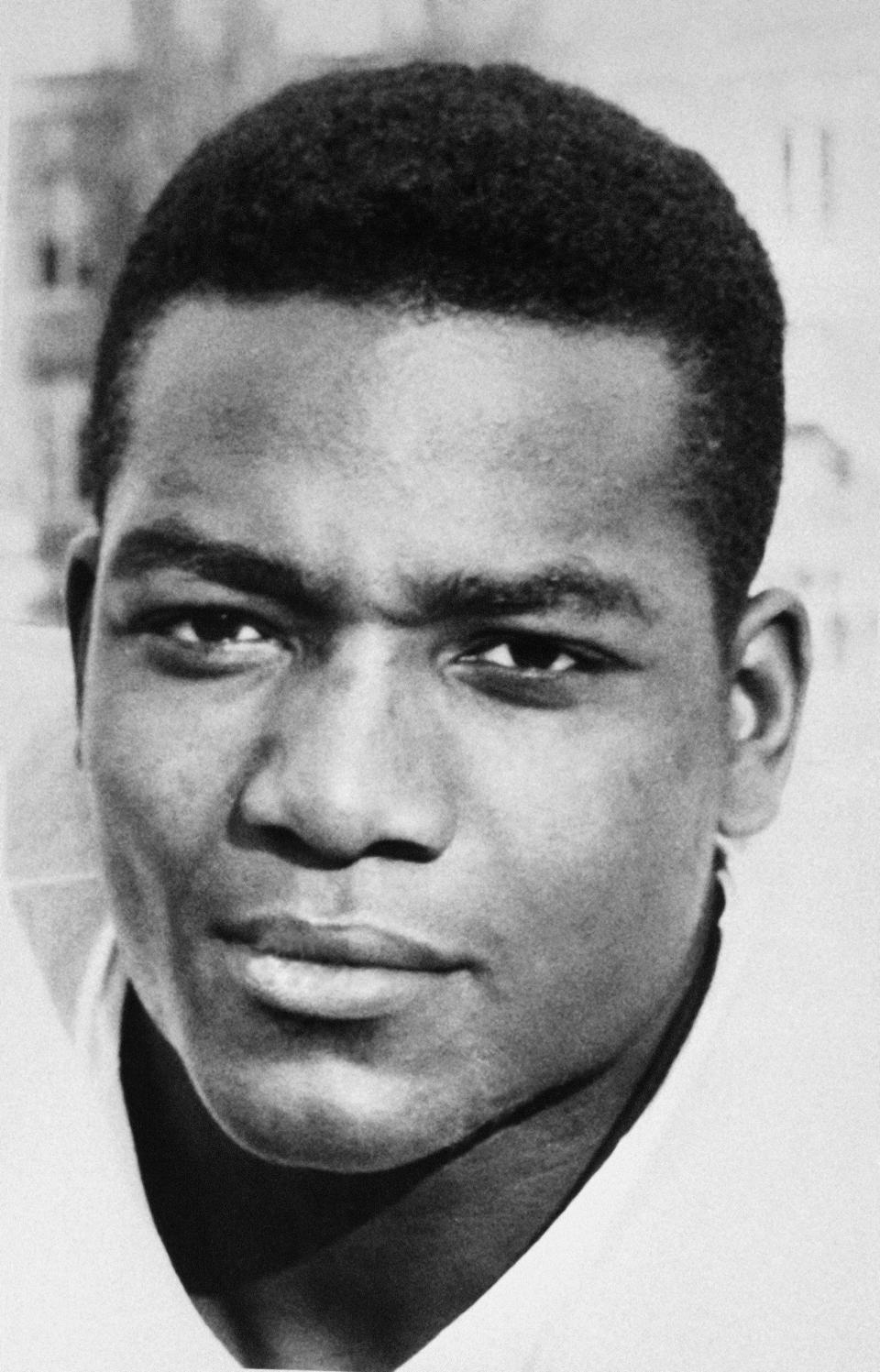
"Actually, Jim was our second choice," Paul Brown wrote in his 1979 autobiography. "We desperately needed a quarterback, and John Brodie, Len Dawson and Paul Hornung were available in the first round."
The first five picks were Hornung to the Packers, running back Jon Arnett to the Rams, Brodie to the 49ers, lineman Ron Kramer to the Packers, and Dawson to the Steelers.
"The Steelers pondered for a bit over Jim Brown and Len Dawson and finally chose Dawson," Paul Brown wrote. "It was ironic that both of us needed a quarterback, because the Steelers had cut John Unitas in 1955, and we had a chance at him.
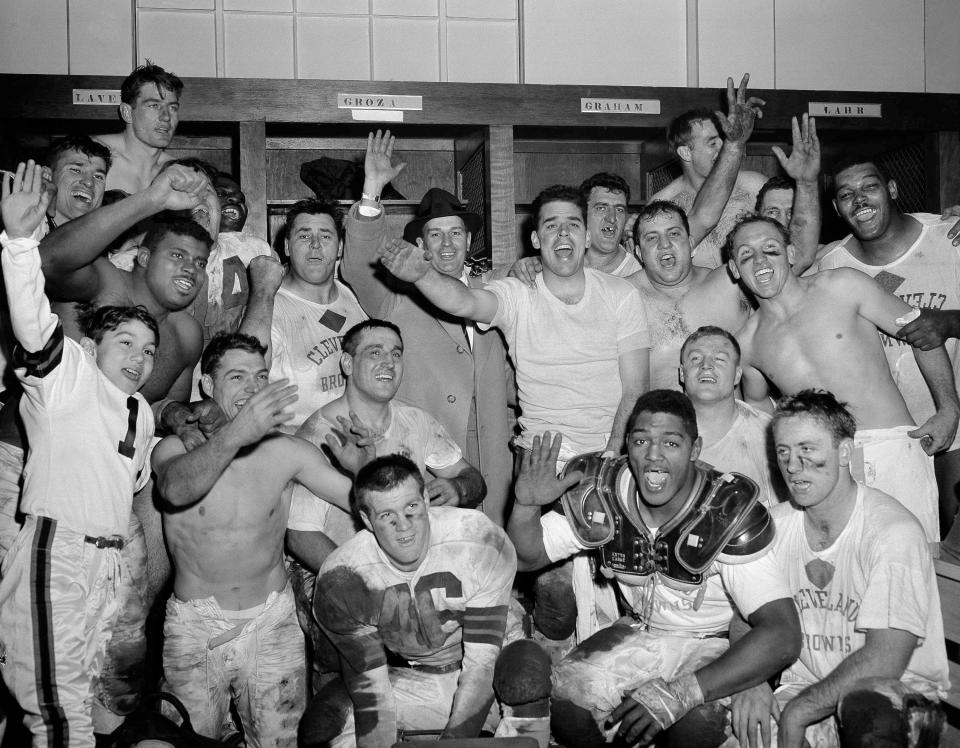
"Unitas called me and asked for a tryout, but at the time Otto was back and perking along, so I told John that we had no openings but he was welcome to come back the next year."
There was no next year for Graham, who retired after the 1955 season. The only team Unitas could find in 1955 after the Steelers cut him was a semi-pro outfit in Pittsburgh that paid him $6 a game.
"We never found another Otto Graham," wrote Paul Brown, who had one right under his nose in Unitas.
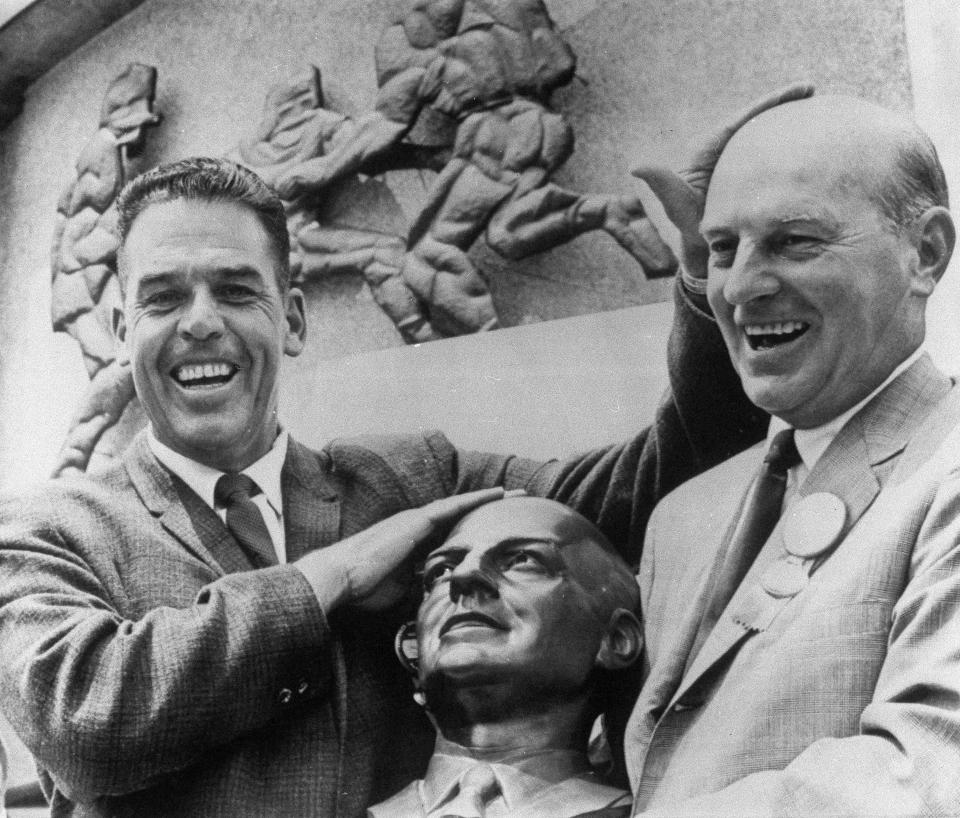
Paul Brown's friend and former Cleveland assistant Weeb Ewbank was in his third year as head coach of the Baltimore Colts when he signed Unitas in 1956 as a backup to 1955 No. 1 overall draft pick George Shaw. By midseason in '56, Shaw had broke his leg and Unitas on his way to being a legend. Unitas started in a 21-7 win at Cleveland that year, and within 10 years, Otto vs. Johnny U, in terms of career greatness, was a legitimate debate. Both are on the NFL's 100th Anniversary Team.
The '56 Browns went 5-7 while using three starting QBs, George Ratterman, Tommy O'Connell and Babe Parilli. The worst record in Graham's 10 years had been 8-4, but a poor record had an upside, a high draft pick.
Dick Gallagher, who later became director at the Pro Football Hall of Fame, was Paul Brown's lead scout then. Gallagher attended four of Jim Brown's 1956 games at Syracuse. Paul Brown watched film and liked Jim Brown's power, speed, field sense and size, 6-foot-2, 235 pounds.

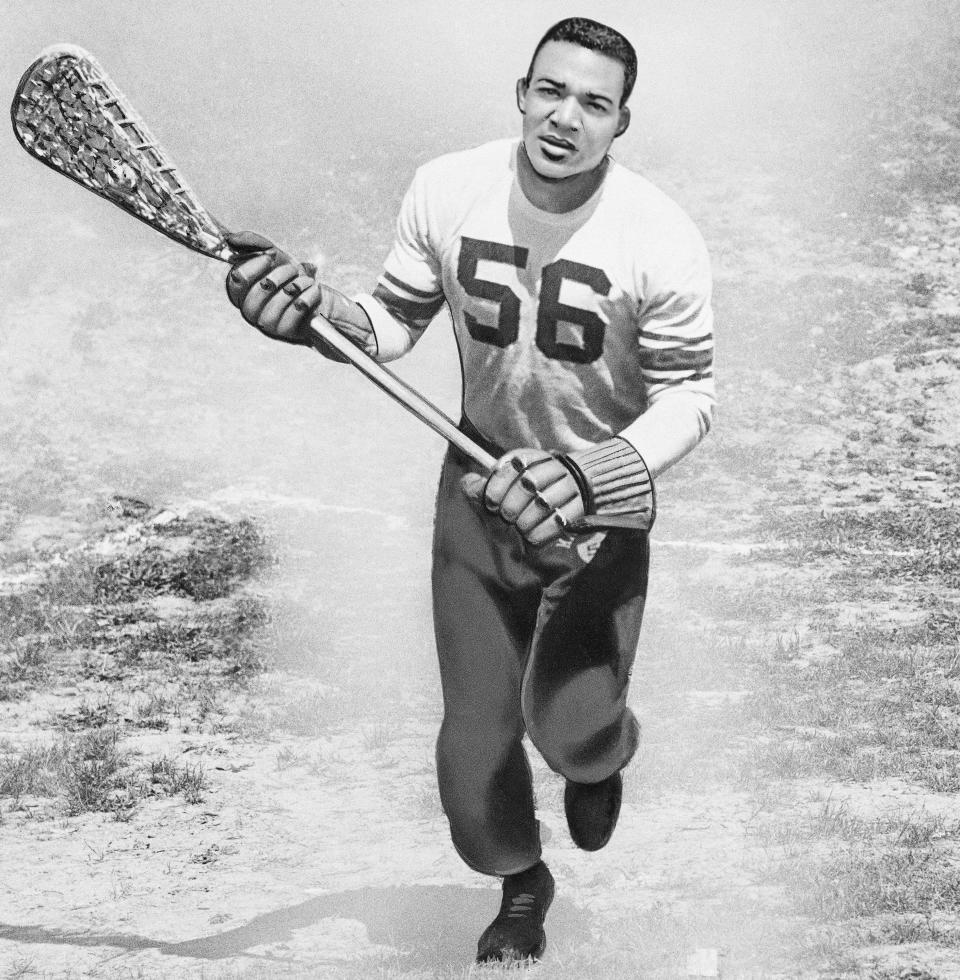
Paul Brown had spent his top 1956 pick, No. 13 overall, on running back Preston Carpenter. As a rookie, Carpenter led the 5-7 team with 756 rushing yards but produced zero touchdowns. The coach went into the 1957 draft open to an upgrade.
He got one. As a rookie, Jim Brown scored 10 touchdowns and led the NFL in rushing yards on a team that went 9-2-1.
"I signed him to a $12,000 contract and gave him a $3,000 bonus, the most we had ever paid a rookie," Paul Brown wrote. "And he was worth it.
"He was a once in a lifetime player."
Jim Brown led the NFL in rushing yards in 1957, '58, '59 and '60.
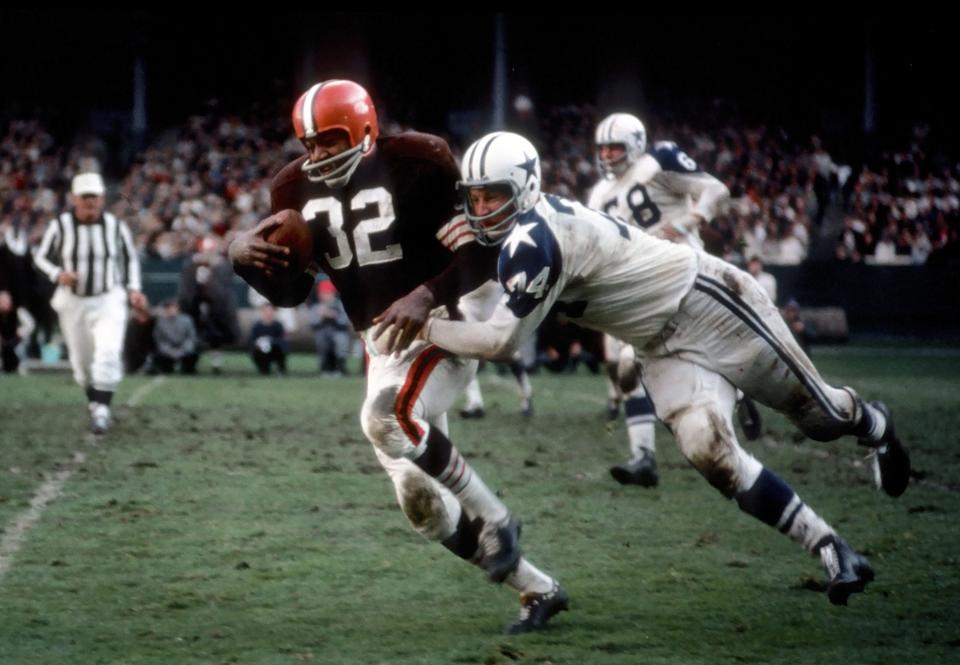
More on Jim Brown: Unstoppable Cleveland Browns legend, Hollywood movie star, Malcolm X associate, remembered
"At the beginning," Jim Brown wrote in his 1989 autobiography, 'Out of Bounds,' "I loved playing for Paul. I was a runner. Paul wanted me to have the ball. I loved him for that.
"I didn't mind all his rules. Paul's dictatorship discouraged cliques, and that discouraged racial prejudice. His rules were not to be questioned, by anyone. We all had to abide by them equally. That was very pleasing to me."
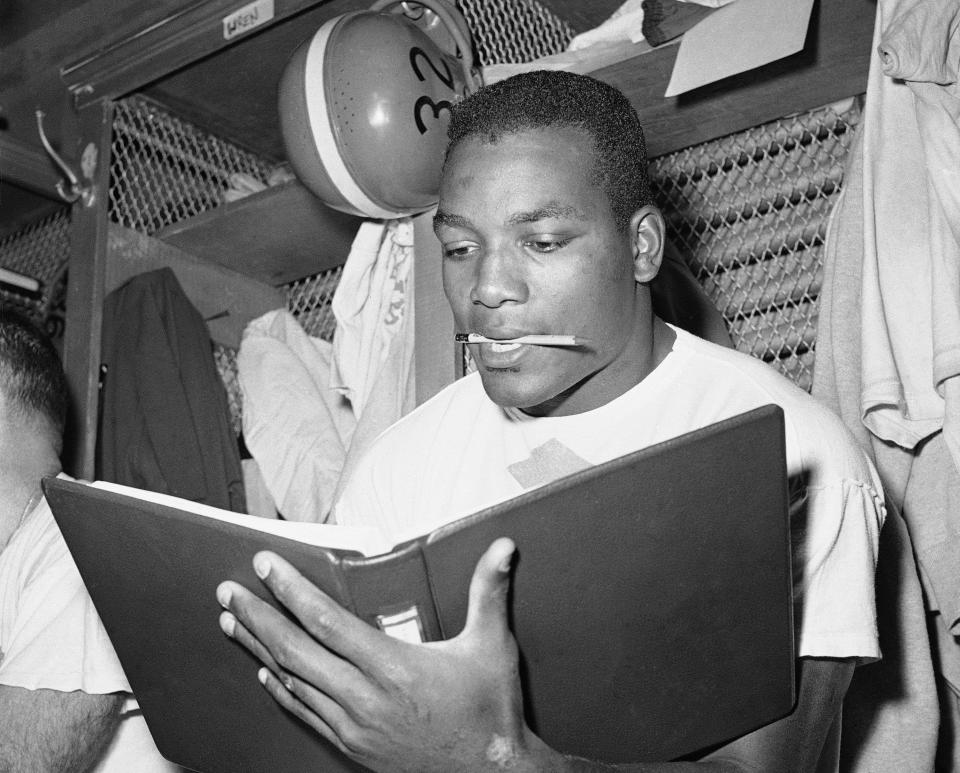
In 1961, Art Modell, then 35, bought the Browns and blew in from New York City wanting a piece of the action. Paul Brown, then 52, found his own my-way-or-the-highway approach re-routed through Modell's office.
Modell became chummy with Jim Brown. Paul Brown was not amused when Modell began calling Jim Brown his "senior partner."
Paul Brown and Jim Brown developed complex approaches to each other, detailed in each of their autobiographies.
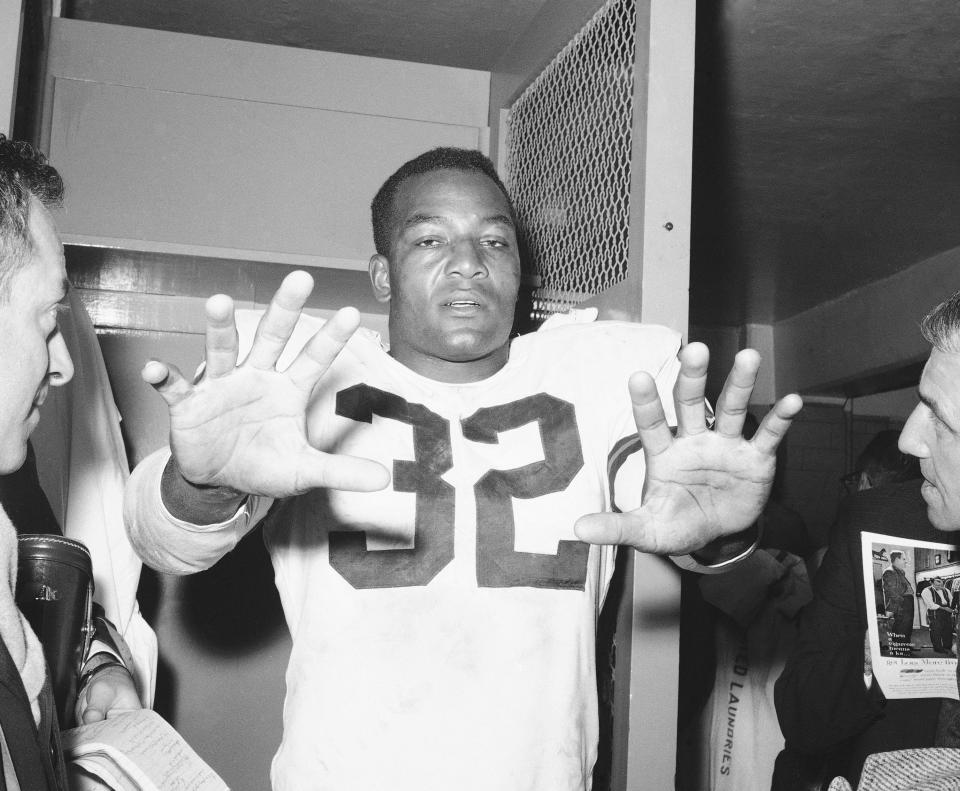
Paul Brown in his 1979 book:
"I never had a sharp word with Jim, nor did he have any with me, during the six years he played on my teams. That does not mean our years together were problem free. Indeed, there were times when I regretted having drafted him, and before the 1962 season I seriously considered trading him because his outlooks and attitudes had such an undesirable effect on our team.
"However, there was never any open hostility between us over these differences, and I appreciated his football talent as much then as I do now."
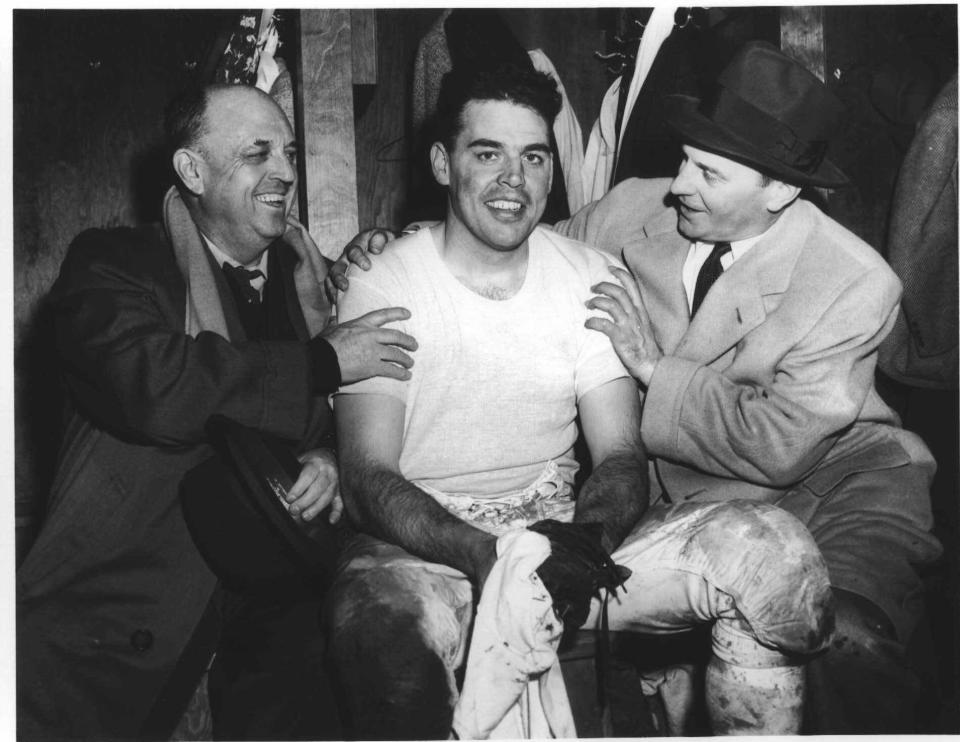
Jim Brown presented his side in his 1989 book.
"Paul and the other coaches were right about one thing. I did have an attitude. My attitude — and this is what coaches could never see — was not shaped only by football. If my mind was limited to football, per the desire of the Browns' staff, what type of man would that make me?
"My attitude was shaped by personal conviction. It was shaped by society, and my role in that society. It was shaped by being Black in America in the 1950s. If it wasn't for that 'attitude,' I never would have made it to the Cleveland Browns. I would have been stopped in Syracuse, the first place they tried to change me.
"They never knew it, but my attitude was a blessing to the Cleveland Browns. Without it they never would have gotten the yards. What happened on Sunday WAS my attitude."
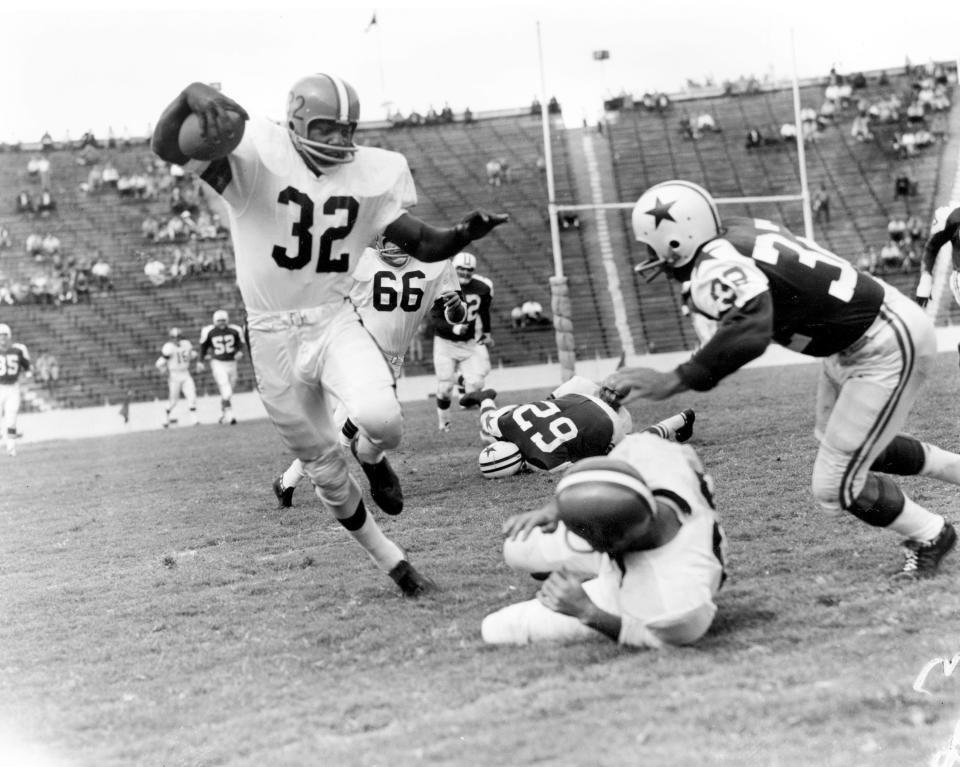
In the same books, Paul Brown and Jim Brown acknowledged each other's strengths.
Jim Brown:
"In a sense, Paul and I will always be married. We'll always be linked to each other, the history of the Cleveland Browns, and the history of the NFL. We had clashes, but they didn't diminish our shared accomplishments. Not for me.
"Paul literally invented much of modern coaching."
Paul Brown:
"As a pure runner, Jim stands alone. He had that rare combination of size and speed. He had the ability to shuffle laterally if a hole was closed. Once he found an opening, his acceleration caused tacklers just to bounce off him.
"Tacklers thought they had him, but Jim had the unusual ability to make one of his legs go limp, and when the tackler relaxed, he surged forward, ripping apart the man's grip.
"Jim also was a most determined runner. Though he played half his games on the heavy turf in Cleveland, it never bothered him because he had such great balance. His feet were never far from the ground."
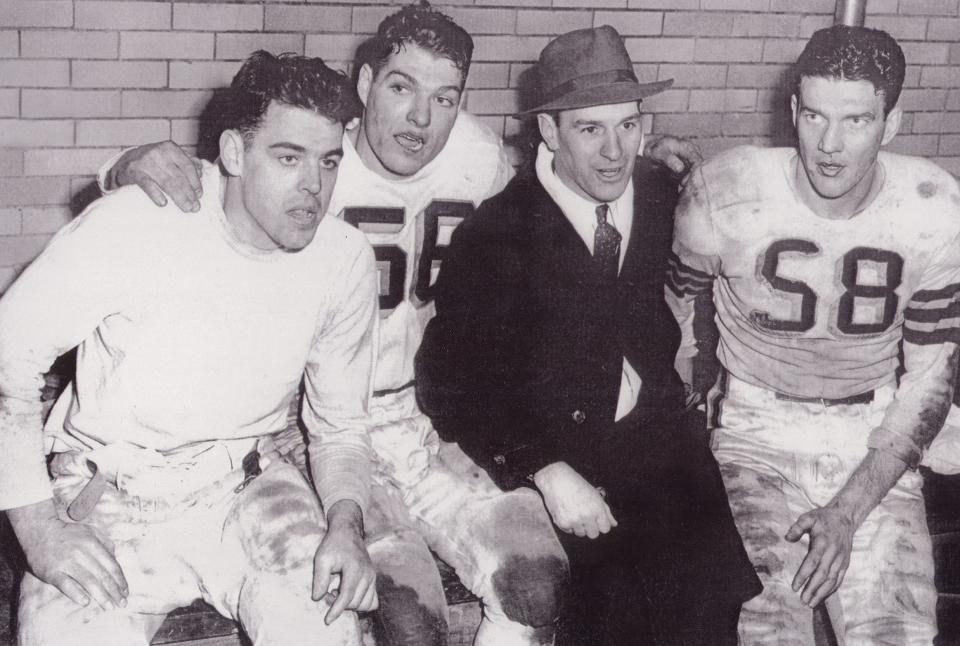
More on Jim Brown: Social media reacts to death of Cleveland Browns legend, NFL Hall of Fame RB Jim Brown
The Browns posted an 18-5-1 regular-season record in Jim Brown's and Paul Brown's first two years together. But the quarterbacks were O'Connell and Milt Plum, not Otto Graham or Johnny Unitas.
In a 1957 game against the Rams, O'Connell went 0-for-4 passing; Plum threw nine times for 62 yards. Brown ran for 237 yards and four touchdowns in a 45-31 win.
In the 1958 regular-season finale against the Giants with postseason implications, Jim Brown ran for 148 yards. But the offense failed to generate points, leading to a 10-7 loss on a late Pat Summerall field goal.
The Browns got drilled Detroit, 59-14, in the 1957 NFL championship game. They faced the Giants in a 1958 playoff to determine who would represent the Eastern Conference in the finals against the Western Conference champion Colts.
Jim Brown and Paul Brown spent another four years together without returning to the postseason. In the running world, Jim Brown moved into a league of his own.
The only players to rush for more than 800 yards in 1959 were Brown with 1,329 and J.D. Smith of the 49ers with 1,036.
Brown again led the NFL in 1960, with 1,257 yards. Green Bay's Jim Taylor was next at 1,101.
The two 1,000-yard runners in 1961 were Brown at 1,408 and Taylor at 1,307. From there it dropped off to the Giants' Alex Webster at 928.
Brown retired after nine seasons in Cleveland. He led the NFL in rushing eight times, the only miss coming in 1962, when he played every game but operated for part of the year with a broken wrist.
A 7-6-1 finish emboldened Modell to fire Paul Brown. It almost goes down in history as a good idea.
More on Paul Brown: NFL Black Monday: Cleveland Browns coach Paul Brown fired by owner Art Modell 60 years ago
In 1960, '61 and '62, under Paul Brown, the Browns went 8-3-1, 8-5-1 and 7-6-1 and did not reach a postseason. Under Coach Blanton Collier in 1963, '64 and '65, the team went 10-4, 10-3-1 and 11-3 in the regular season, won the NFL championship in 1964, and reached the NFL finals in 1965.
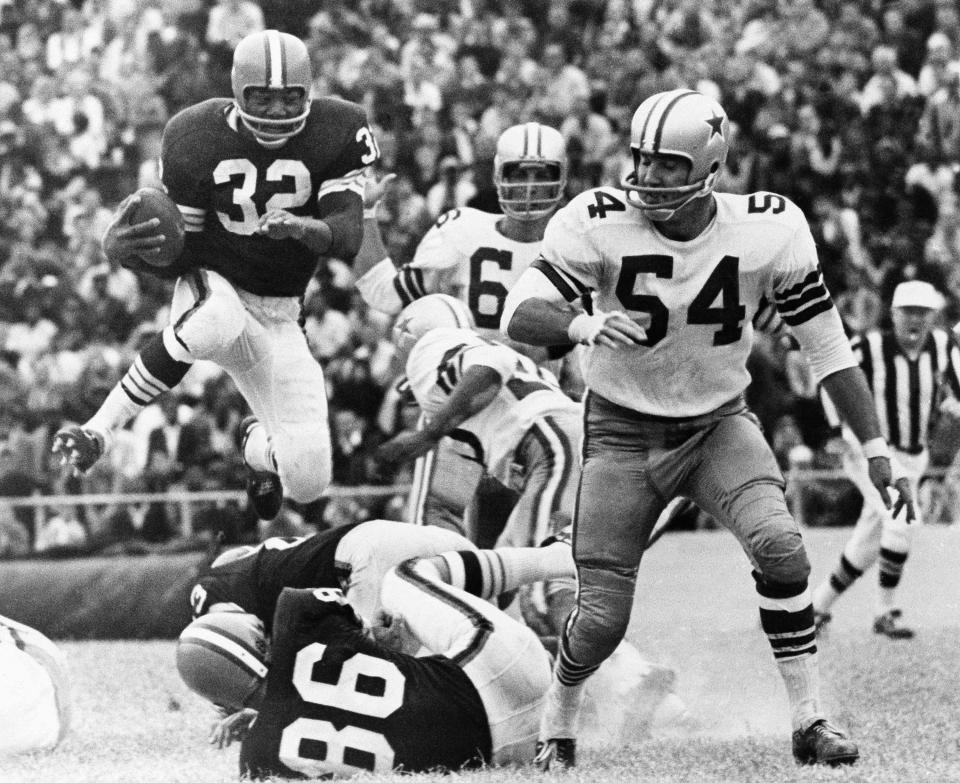
Jim Brown's first year with Collier was a stunner. The NFL's top three rushers were Brown with 1,863 yards (6.4 average), Taylor with 1,018 (4.1), and Tim Brown of the Eagles with 841 (4.4).
The top three in 1964 were Brown with 1,446 yards, Taylor with 1,169 and John Henry Johnson of the Steelers with 1,048.
The top three in 1965 were Jim Brown with 1,544 yards, Gale Sayers with 867 and Tim Brown with 861.
It ended there. Jim Brown turned to an acting career, essentially firing Modell. The NFL rushing leaders in 1966 were Sayers with 1,231 yards and Leroy Kelly, Brown's replacement, with 1,141.
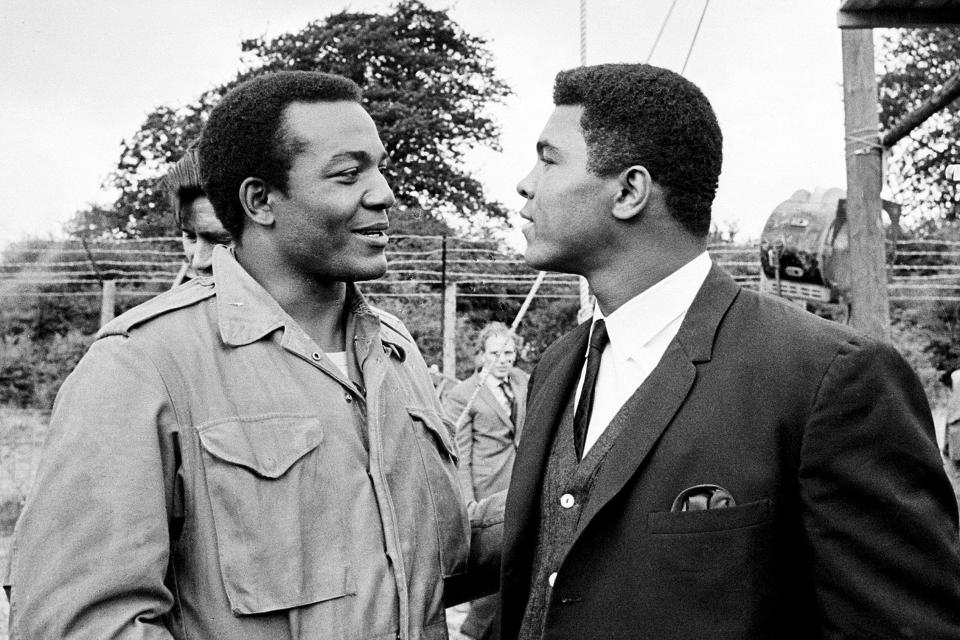
Jim Brown was in London in 1966 during the NFL offseason, on the set of "The Dirty Dozen." He said he thought about playing for the '66 Browns until Modell threatened to fine him for every day of training camp he missed.
Modell stayed on as the owner to progressively mixed reviews and ultimately atomic boos when he moved the franchise to Baltimore 30 years after Jim Brown walked away.
Jim Brown reconnected to Cleveland after the Browns returned as an expansion team in 1999.
He became particularly close to Randy Lerner, who inherited ownership after Al Lerner died in in 2002. Jimmy Haslam formed a relationship with Brown after buying the team in 2012. Into his 80s, Brown was listed on the organizational chart as a "senior advisor."
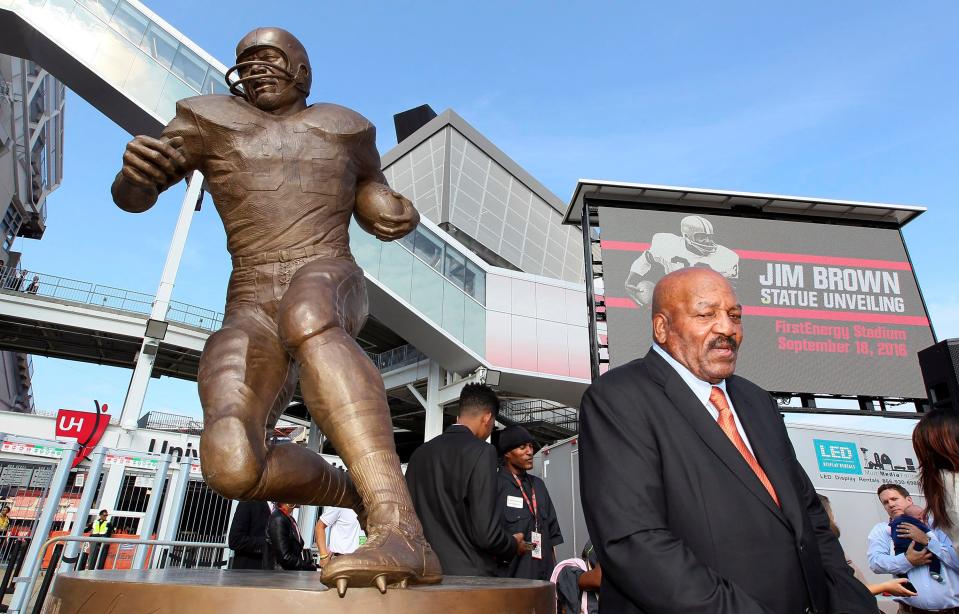
On Haslam's watch, a Jim Brown statue went up outside the stadium in 2016. Why no Otto Graham statue? That question was addressed when a Graham statue appeared in 2019.
Arguments for a Paul Brown statue pop up, as do questions about where the Cleveland Browns would have gone if Art Modell would have humored himself in some other city.
Reach Steve at steve.doerschuk@cantonrep.com
On Twitter: @sdoerschukREP
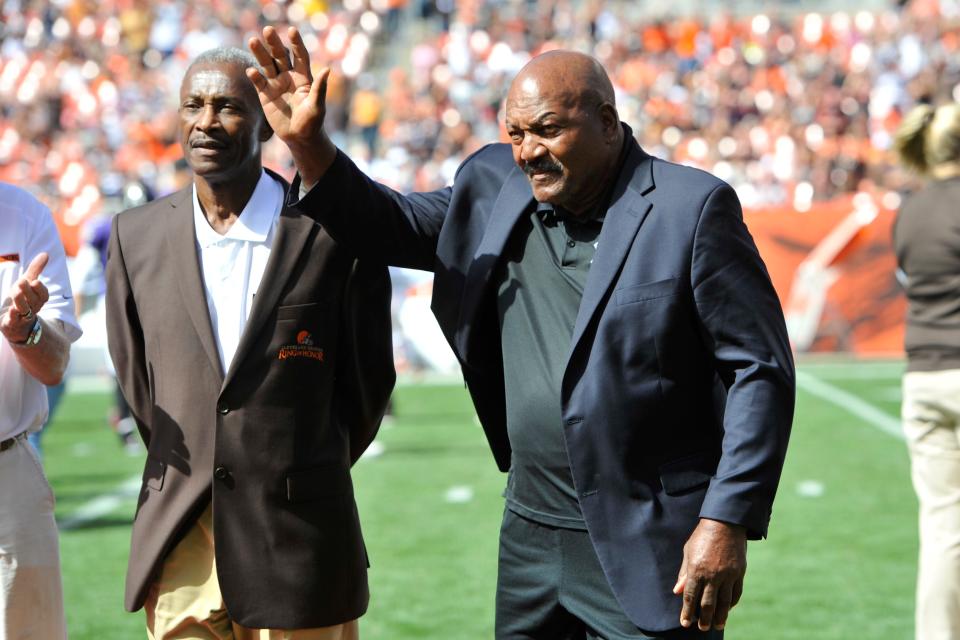
This article originally appeared on The Repository: Jim Brown's legacy with Cleveland Browns forever tied to Paul Brown

